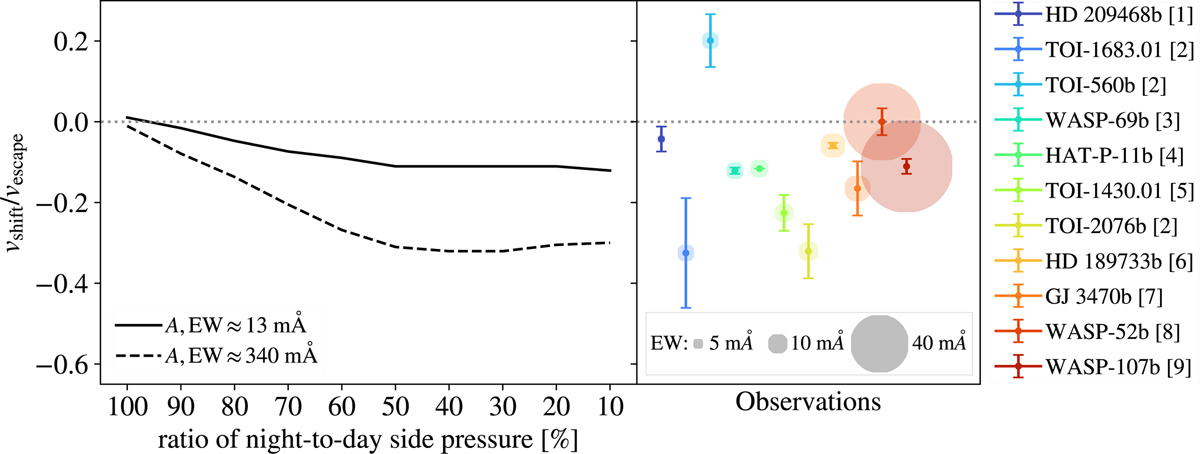Fig. 9

Download original image
Mid-transit velocity shift of the strong (red) component of the helium 1083 nm line shown as a function of the night-to-day side pressure ratio, normalized by the escape velocity at the planet’s surface. Here, we scale the density of the snapshots in a way that ensures the resulting spectra attain the same equivalent width (EW) (left). The observational measurements of the helium velocity shift during mid-transit in units of the individual escape velocity of the observed planet. The marker size corresponds to the strength of the measured EW (right). The dotted line shows the separation between positive and negative velocity shifts. By adjusting our simulations to match the properties of a specific planet, including the equivalent width (EW), we could effectively constrain the day-night anisotropy of the planet’s atmosphere. No velocity shift uncertainties were provided for HAT-P-11b. [1] Alonso-Floriano et al. (2019), [2] Zhang et al. (2023a), [3] Nortmann et al. (2018), [4] Allart et al. (2018), [5] Orell-Miquel et al. (2023), [6] Salz et al. (2018), [7] Palle et al. (2020), [8] Kirk et al. (2022), [9] Kirk et al. (2020).
Current usage metrics show cumulative count of Article Views (full-text article views including HTML views, PDF and ePub downloads, according to the available data) and Abstracts Views on Vision4Press platform.
Data correspond to usage on the plateform after 2015. The current usage metrics is available 48-96 hours after online publication and is updated daily on week days.
Initial download of the metrics may take a while.


